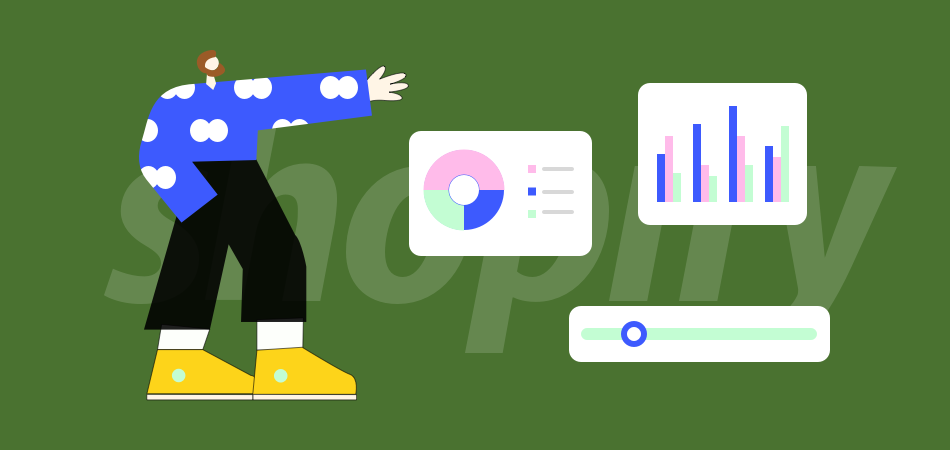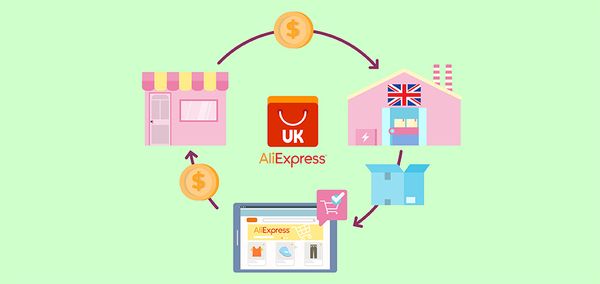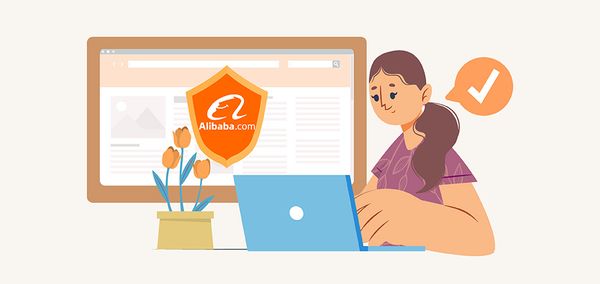How to Set and Use Shopify Analytics for Your Online Store?

It's not only about sales when it comes to running and expanding your online shop but it is all about leveraging data to ask the correct questions and make sound decisions. That's why understanding Shopify Analytics is critical - it's your competitive edge, and if you're not using it, you're losing money.
You may utilise Shopify Analytics to learn more about your consumers, which goods to sell, and when to focus more on a specific marketing channel.
Today you will study the following:
- What data Shopify Analytics gives you.
- Where you can discover the information you need without having to spend hours combing through worthless stats.
- How to Integrate Google Analytics with Shopify to Get More Data
Using Shopify Analytics, you will be able to learn how to transform data into valuable insights that can help you sell more.
In this Shopify Analytics guide, we'll teach you all you need to know to boost your online sales, including where to go to discover solutions to store owners' most often asked problems.
What Exactly Is Shopify Analytics
Shopify Analytics is the built-in data dashboard for Shopify. It assists ecommerce store owners in understanding their business's performance and how to enhance it.
While it has certain limits (more on that later! ), it outperforms the competition by far. Shopify Analytics is the place to go if you want to know the answers to queries like:
- How many things did you sell last week?
- What were the most popular products that you sold?
- Where do your clients come from?
- What is your AOV (Average Order Value)?
- Which marketing channel provides the best Return on Investment (ROI)?
However, locating the appropriate data might be difficult. What should you look for? How do you personalise it? How can you transform data into a live business decision?! How can you transform the data in Shopify Analytics into actionable insights that will help you to sell more?
All of this is covered below, so keep reading!
Why Use Shopify Analytics for Dropshipping Store
If you're already convinced of data's power, please proceed to the next part. For people who are still on the border of whether they should use it or not; consider two Shopify store owners that are equal in every regard but one:
- Going with their gut' is how Business A makes all its decisions.
- On the other hand, Business B makes decisions based on a combination of facts, instinct, and experience.
Here, what do you think will be more profitable in a year's time if you stake your life savings on it? Aside from hypotheses, data, when used correctly, may assist you in understanding what works and what doesn't.
For example, measuring essential indicators in your Shopify store versus KPIs allows you to make smarter decisions. Better judgments equate to less wasted Facebook ad spend, greater average order values, and more profit! However, in order to act, data must be transformed into actionable insights.
Improve Your Online Store Using Shopify Analytics
Begin by entering your Shopify account and selecting 'Analytics' available in the left-hand menu.
There are three sections you may address in Shopify Analytics:
- Dashboards
- Reports
- Live View
Let's take a closer look at each of them:
Shopify Overview Dashboard
This is the most significant area to acquire a basic grasp of how your shop is operating and to learn about your customers' activities.
Here, you can:
- Compare the performance of one sales channel against that of another.
- Examine your Average Order Value to observe how it has changed as a result of new goods, price hikes, or marketing efforts.
- Discover where your clients are coming from and which social media platforms bring you the most traffic.
You may compare one period of time to another by using the date selector button on the top-left of the screen to observe how things have changed.
Next, click 'View Report' to delve further into important metrics. Here are the ecommerce analytics metrics available for you, along with their precise definitions.
Learn Sales and Product Metrics
- Total sales - It shows the total revenue you brought in via the online store and your POS (Point Of Sale) in case you possess a physical brick-and-mortar store.
- Sales by source - It can be defined as the number of sales from social media channels or other traffic platforms or sources.
- Sales attributable to marketing - the total amount of sales that Shopify estimates were generated to your online store as a result of your marketing efforts.
- Average order value - It is the amount of money you make each transaction, computed by totaling your income for the period and dividing it by the number of transactions.
- The conversion rate of an online store: The percentage of sessions that result in a purchase in an online retailer. You may also show the proportion of sessions where a visitor added at least one product to their basket, reached the checkout and completed a transaction (referred to as 'Sessions Converted').
- Top selling items – determine which products sell the most to acquire more inventory or design marketing campaigns that promote these products.
Metrics for Visitors and Customers
- Online shop sessions - Discover how often consumers visited your store, what device they were using, where they were, what traffic source they came from, and whether they came from a specific social media platform, for instance, Facebook, Instagram, or Pinterest.
- Top landing pages - determine the website pages where the majority of visitors begin their trip.
- Returning customer rate - The proportion of consumers that purchased from you more than once within the period specified.
Reports on Shopify Analytics
Reports are the part under dashboards. The more sophisticated your Shopify package, the more reports you'll have access to.
Now, it's time to give an eye to the most relevant reports.
1. Reports on Shopify Acquisition
Acquisition reports provide information on your website sessions over time, by the referrer, and by geography, letting you see how much traffic you have and where it is coming from. At this point, you might wonder, "How does Shopify define a session or a visitor?" When a shopper visits your online business, they place cookies on their smartphone or computer.
Shopify considers a session to be over after 30 minutes of inactivity or when it reaches midnight UTC. The critical point to understand is that if the same user visits your site twice, they will be counted as one visitor but two sessions. Therefore, your session count will almost always be greater than your visitor count.
Shopify Behaviour Reports
When it comes to Shopify Analytics, behaviour reports are one of the most valuable tools at your disposal.
Using Shopify's behaviour reports, you may see:
- How your conversion rates on your online store have altered over time.
- What are your top online store searches?
- How have your product suggestions evolved over time?
- How quickly your online store loads in comparison to competitors, and
- How your sessions are distributed among landing pages and devices.
Report on online store conversion over time
This report may be used to evaluate how your conversion rate has evolved over a specified time period, such as one month to the next. This is a terrific approach to see if the adjustments you're making to your shop are effective.
In a perfect environment, you would perform A/B split testing to determine which version of the site converted the best. However, most ecommerce companies lack the traffic and conversions necessary to do this. So instead, you can do the next best thing and utilise common sense paired with consumer feedback to increase the visibility of the goods that people enjoy.
An accurate report of top online store searches
Is there a search bar on your Shopify store? If so, select the 'Top online shop searches report learning what your visitors are looking for.' 'Original query' displays what your visitors typed, allowing you to tweak your product titles and descriptions to assist your consumers in finding what they're looking for.
Use the 'Top online shop searches with no results' report to determine why specific goods did not generate an effect and add relevant keywords to your product descriptions to improve the consumer experience.
If people are looking for something you don't have in stock, you should add it as soon as possible! If you have a lot of searches for a specific product, you may make it simpler to locate by putting it on your homepage or creating a new category named 'most searched for.'
Website Cart Analysis Report
Want to know which goods to display to clients based on their previous purchases? The Website cart analysis report displays what proportion of your website visitors added one product to their basket and subsequently added another.
This is an excellent approach to discovering product connections - for example, did 25% of consumers who purchased a coat to their cart also add gloves? Or did someone who bought hiking boots also buy waterproof pants?
You may also improve your product performance by adding a text link to your product pages that reads 'customers who purchase X also like Y' to boost the likelihood that they will add both to their basket.
Live View on Shopify
The final element of Shopify Analytics is 'Live Image,' which displays a real-time view of a globe map, allowing you to see how many visitors you have at any given time and where they're coming from.
There is no requirement to spend much time looking at this outside of peak purchasing occasions like Black Friday and Cyber Monday. Yes, knowing where your customers are coming from and seeing the visitor counter move up and down is entertaining for a while, but are you going to alter anything as a result of this information? Most likely not.
The only exception to this rule is if you receive consumer feedback indicating there is a problem with the store. Shopify Live view can help you determine whether the issue was isolated or whether it is a symptom of a more significant problem affecting other visitors.
How to Boost the Speed of Your Shopify Store
There are some basic adjustments you may make if your business is slower than others:
- Using a Shopify app, compress your photos to reduce file size and speed up page loading. Consider using Crush Pics, Minifier, or SEO Optimizer.
- Accelerated Mobile Pages (AMP) are used to produce pages that load rapidly on smartphones and tablets. Remember that more than half of all purchases are made on mobile devices, so why not use AMP by Amplify Me or AMP by Shop Sheriff?
- Move to a fast, efficient, and responsive Shopify theme that brings crucial changes in your website's display to meet the requirements of your visitor's device and screen size. Moreover, if you want a more advanced and in-depth analysis of your site speed, you should Google page speed insights and use an app or developer to carry out their recommendations.
End Note
A company's success currently relies heavily on displaying the most extraordinary items at the appropriate moment, reacting to trends, and offering offers as user behaviour shifts. However, with the utmost beneficial features of Shopify Analysis, you will likely enhance the chances of your business growth. Similarly, if you are an ecommerce store owner or marketer looking for advanced data analysis and require professional assistance for your business's immense success, we suggest you visit DSers. The blogs available there offer you the best useful marketing tips, most valuable information regarding the unbelievable growth of your online business and more.












 Company
Company
 Why Choose DSers
Why Choose DSers
 Blog
Blog
 Help Center
Help Center




 Live Chat
Live Chat